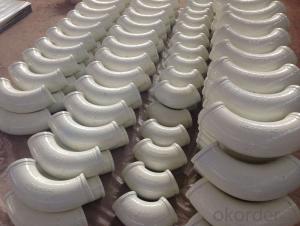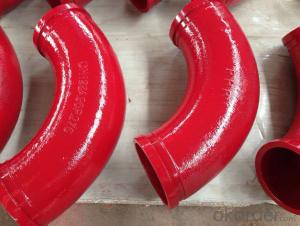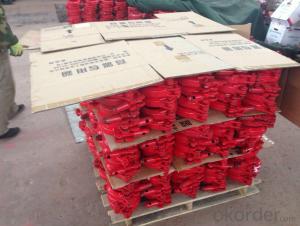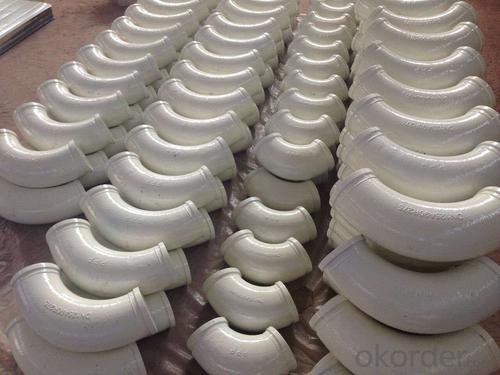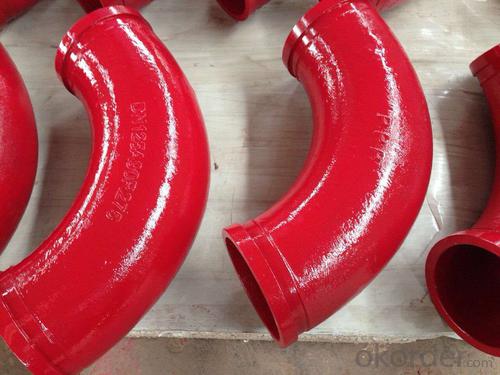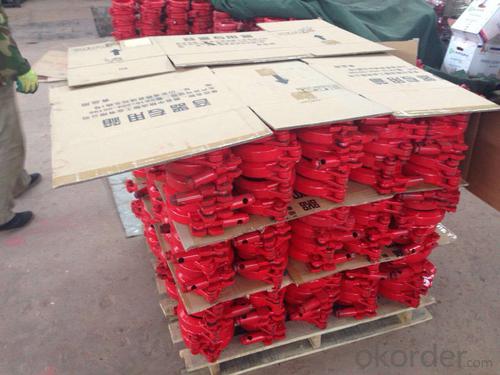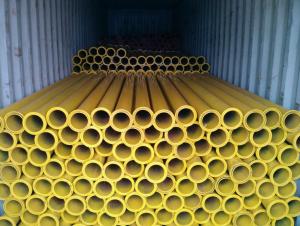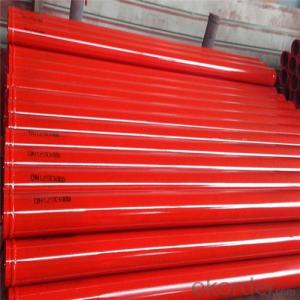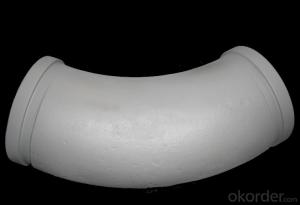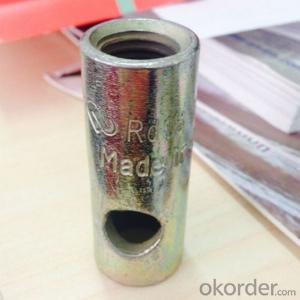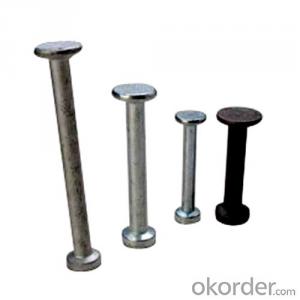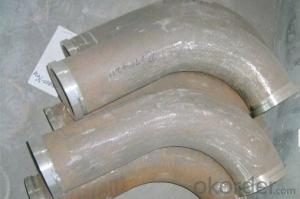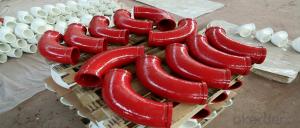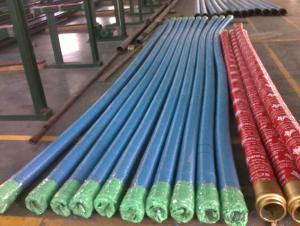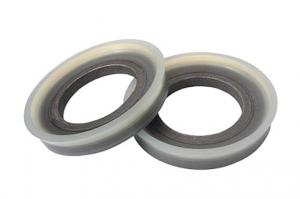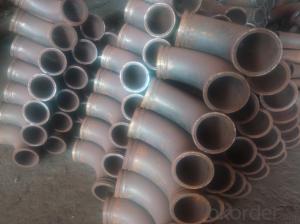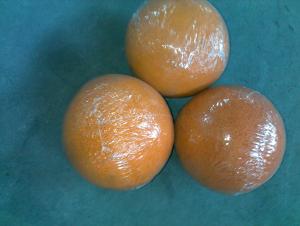CONCRETE DELIVERY ELBOW PM TYPE 90DEG R180 DN125
- Loading Port:
- Tianjin
- Payment Terms:
- TT OR LC
- Min Order Qty:
- 100 pc
- Supply Capability:
- 10000 pc/month
OKorder Service Pledge
OKorder Financial Service
You Might Also Like
concrete pump elbow table
Wear-resistant Single or Double Concrete Pump Elbow | |||||||
Type | Singe Elbow | Double Elbow | |||||
Model | DN125 | DN150 | DN175 | DN125 | |||
Material | Casting Steel ,ST52 | Inside | 40Cr | Outside | |||
Size | R275*90° | R275*90°+110 | 36° | F2000 | R275*90° | R275*90°+110 | |
R275*45° | R275*90°+211 | R400*30° | A3000 | R275*45° | R275*90°+211 | ||
R275*25° | R275*90°+411 | R400*45° | 471B | R275*25° | R275*90°+411 | ||
R275*20° | R275*90°+424 | R400*30° | 571B | R275*20° | R275*90°+424 | ||
R275*15° | R275*45°+170 | R488*90° | A1000 | R275*15° | R275*45°+170 | ||
R180*90° | R275*45°+310 | R500*90 | C1000 | R180*90° | R275*45°+310 | ||
R232*60° | R275*45°+310 | R280*90° | B2000 | R232*60° | R275*45°+310 | ||
R240*36° | 20°Lengthen | R240*36° | 20°Lengthen | ||||
R240*30° | 25°+740 | R240*30° | 25°+740 | ||||
R240*15° | 40°Zoomlion | R240*15° | 40°Zoomlion | ||||
R385*29° | R385*29° | ||||||
R315*33° | R315*33° | ||||||
Technic | Forged | ||||||
Average life | 25,000cubic | 50,000cubic | |||||
Appliciation | Used in concrete transport in construction work | ||||||
1.product profile:The double layer concrete pump elbow is developed by ourselves through new
technology and process.
2.characteristic:the inner layer of this concrete pump elbow undergoes heat treatment,and then the rigitiry can reach 62-65HRC.
3.characteristic:the outer layer of the concrete pump elbow possess good toughness properties
to protect the inner layer,so the security of the elbow is improved.
4.life:the experiment done abroad shows that the life of our concrete pump elbow can reach 35000-50000cbm,got the customers' praise
5.Beside the double layer concrete pump elbow,we produce all kinds of concrete pump parts,
straight pipe hose flange coupling and so on.
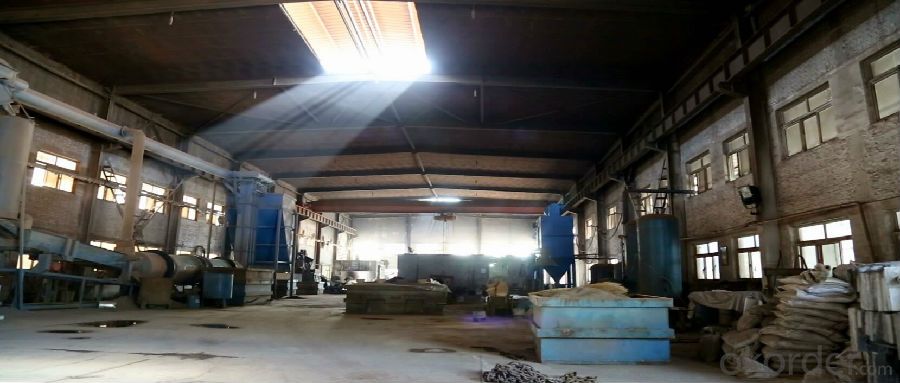
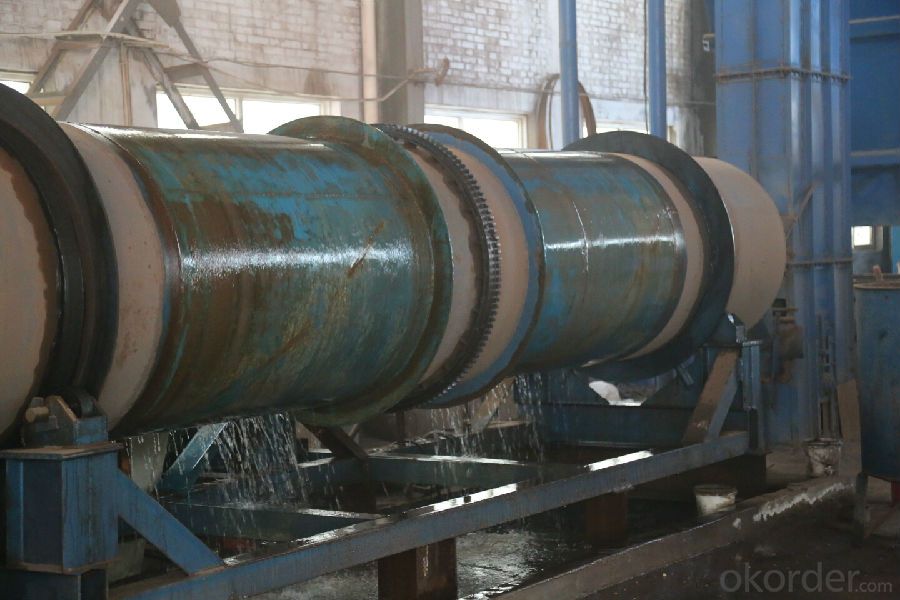
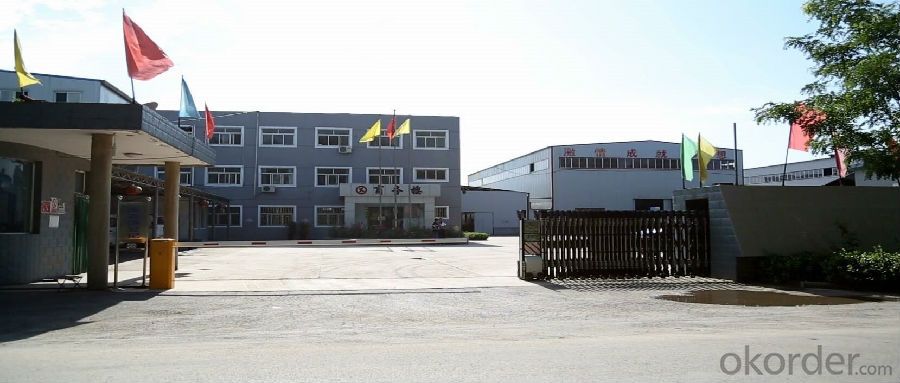
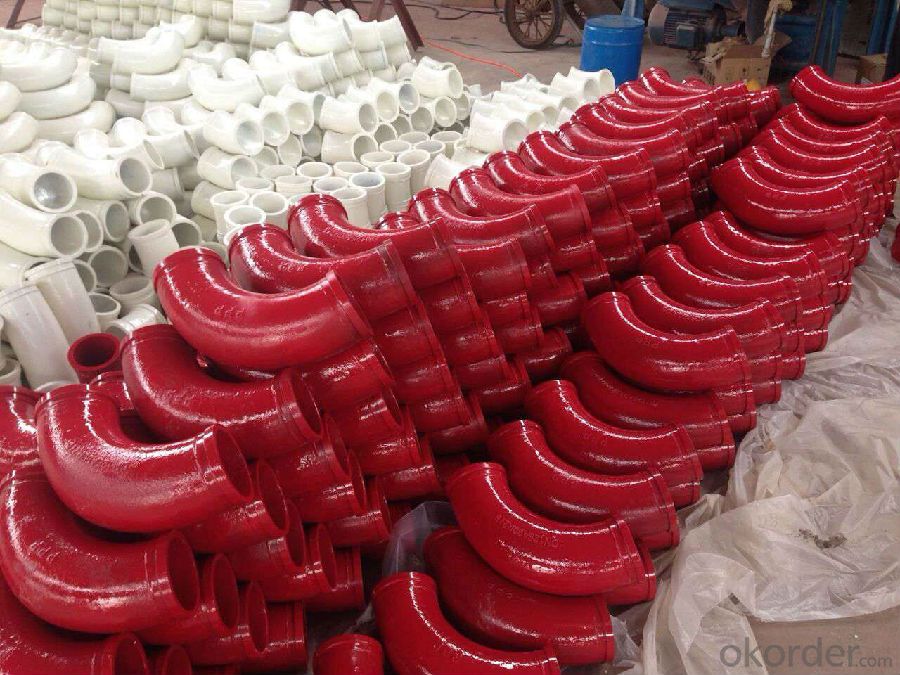
- Q: How can a malfunctioning remote control affect the pumping operation?
- The pumping operation can be significantly affected in multiple ways by a malfunctioning remote control. Initially, operators utilize the remote control to operate the pump from a distance, enabling them to control crucial settings such as speed and direction. If the remote control malfunctions, it can hinder operators' ability to effectively control the pump, resulting in delays or inefficiencies in the operation. Furthermore, a malfunctioning remote control can lead to inconsistent or erratic commands being sent to the pump. This instability in commands can cause fluctuation in flow rates, pressure, or other critical parameters, thereby impacting the overall efficiency and effectiveness of the pumping operation. Moreover, there are safety risks associated with a malfunctioning remote control. If the remote control fails to transmit accurate commands, it may cause the pump to operate at undesired speeds or pressures, potentially leading to equipment damage or accidents. Additionally, during emergencies or hazardous situations, the inability to control the pump remotely can hinder operators' prompt response and risk mitigation. Additionally, a malfunctioning remote control can disrupt the monitoring and control systems linked to the pumping operation. Remote controls are often integrated with centralized monitoring systems that provide real-time data and alerts to operators. If the remote control fails, it can interrupt the flow of critical information, making it challenging for operators to monitor the pump's performance, identify issues, or make informed decisions. To conclude, the malfunctioning of a remote control can adversely affect the pumping operation by impeding remote control functionality, causing erratic pump performance, posing safety risks, and hindering monitoring and control systems. Therefore, it is essential to regularly inspect and maintain remote controls to ensure their proper functionality and minimize any potential disruptions to the pumping operation.
- Q: What are the different types of concrete pump hopper cylinders seals?
- There are several different types of concrete pump hopper cylinder seals, each designed to meet specific needs and requirements. Some of the most common types include: 1. Piston seals: These seals are designed to prevent leakage between the piston and cylinder bore. They are typically made of durable materials such as rubber or polyurethane, and are resistant to abrasion and wear. 2. Rod seals: Rod seals are installed on the piston rod to prevent leakage between the rod and cylinder head. They are often made of materials such as rubber or fabric-reinforced rubber, and provide reliable sealing even under high pressure conditions. 3. Wiper seals: Wiper seals are used to remove dirt, dust, and other contaminants from the piston rod as it retracts into the cylinder. They are typically made of polyurethane or rubber, and are designed to provide effective sealing and protection for the cylinder. 4. Wear rings: Wear rings are used to reduce friction and prevent metal-to-metal contact between the piston and cylinder bore. They are typically made of materials such as bronze or Teflon, and help to extend the lifespan of the cylinder by reducing wear and tear. 5. Backup rings: Backup rings are used in conjunction with other seals to provide additional support and stability. They are typically made of materials such as rubber or PTFE, and help to prevent extrusion and damage to the primary seal. Overall, the selection of the appropriate concrete pump hopper cylinder seal depends on factors such as the specific application, operating conditions, and desired performance characteristics. It is important to choose seals that are compatible with the pumped material, provide effective sealing, and have a long lifespan in order to ensure optimal performance and minimize maintenance requirements.
- Q: Are there any specific cleaning and maintenance procedures for concrete pump spare parts?
- Concrete pump spare parts require specific cleaning and maintenance procedures to ensure their proper functioning. Regular cleaning is crucial to remove any concrete buildup or residue from the parts. This can be achieved by either using a high-pressure water jet or immersing the parts in a cleaning solution specifically designed for concrete. It is vital to adhere to the manufacturer's instructions when using cleaning agents to guarantee the safety and effectiveness of the cleaning process. Furthermore, routine maintenance is necessary to extend the lifespan of the concrete pump spare parts and ensure their optimal performance. This involves inspecting the parts for any signs of wear, such as cracks or corrosion, and replacing them if needed. It is also important to lubricate the moving parts, like bearings or pistons, according to the manufacturer's recommendations. It is worth noting that different concrete pump spare parts may have unique cleaning and maintenance requirements. Therefore, it is advisable to consult the manufacturer's guidelines or seek guidance from a qualified technician to determine the appropriate procedures for each specific part.
- Q: What is the washing process of the concrete pump pipe?
- Take some concrete out of the first straight pipe, squeeze it into a saturated sponge ball, and fill a sponge ball with a cement bag soaked in water. The paper also works well
- Q: How do I properly maintain and replace filters in concrete pump spare parts?
- To ensure optimal performance and longevity of your equipment, it is crucial to properly maintain and replace filters in concrete pump spare parts. Here are some guidelines to follow: 1. Get familiar with the different types of filters: Concrete pumps have various filters for hydraulic oil, fuel, air, and water. Take the time to understand which filters are used in your equipment. 2. Consult the manufacturer's instructions: Read the equipment manual and adhere to the guidelines provided by the manufacturer regarding filter maintenance and replacement intervals. This will ensure that you are following the recommended practices. 3. Conduct regular filter inspections: Periodically check the filters for signs of damage, clogging, or excessive debris accumulation. You can visually inspect them or measure the pressure differential across the filter. If the pressure differential exceeds the recommended limit, it may be necessary to replace the filter. 4. Clean or replace filters as required: If the filters are clogged or dirty, they should be cleaned or replaced. Some filters can be cleaned by blowing compressed air in the opposite direction of the airflow to remove debris. However, it is important to note that certain filters are disposable and cannot be cleaned. 5. Use authentic spare parts: When replacing filters, always opt for genuine spare parts recommended by the manufacturer. This ensures compatibility and performance. 6. Follow proper handling and installation procedures: When installing new filters, make sure to handle them with clean hands or wear gloves to prevent contamination. Follow the correct installation procedure, such as tightening the filter housing to the recommended torque value. 7. Maintain a regular maintenance schedule: Establish a consistent schedule for filter inspection, cleaning, and replacement. This will help you stay on top of filter maintenance and prevent potential issues caused by dirty or clogged filters. By adhering to these steps, you can effectively maintain and replace filters in concrete pump spare parts, ensuring efficient equipment operation and an extended lifespan.
- Q: How does a hopper agitator blade ensure smooth concrete flow?
- A hopper agitator blade ensures smooth concrete flow by effectively mixing and breaking up any clumps or air pockets in the concrete mixture. The blade is specifically designed to be placed inside the hopper, where it rotates and agitates the concrete, ensuring that it remains in a uniform and consistent state. As the blade rotates, it helps to disperse any aggregates that may have settled at the bottom of the hopper, preventing them from causing blockages or uneven distribution during the pouring process. This continuous mixing action ensures that the concrete remains well-mixed and free-flowing, allowing for a smooth and even distribution when it is discharged from the hopper. Moreover, the agitator blade also helps to break up any air bubbles that may have formed within the concrete mixture. These air bubbles can weaken the concrete's structural integrity and result in an uneven finish. By agitating the concrete, the blade helps to release trapped air, promoting a more consistent and dense mixture. In summary, a hopper agitator blade ensures smooth concrete flow by effectively mixing the concrete, breaking up any clumps or air pockets, and promoting a consistent and uniform mixture. This ensures that the concrete flows smoothly and evenly during the pouring process, resulting in a high-quality finished product.
- Q: What is the first generation pumping technology of concrete pump?
- The machine assembly is simple and the production cost is low, but the electrical control is complex
- Q: How often should hopper grate handles be inspected or replaced in a concrete pump?
- Hopper grate handles in a concrete pump should ideally be inspected on a regular basis, preferably during routine maintenance checks. However, the frequency of inspection or replacement may vary depending on the usage and condition of the equipment. It is recommended to consult the manufacturer's guidelines or seek advice from professionals to determine the appropriate inspection and replacement schedule for hopper grate handles in a concrete pump.
- Q: What is the purpose of a concrete pump piston?
- The purpose of a concrete pump piston is to provide the necessary pressure to push the concrete mixture from the hopper into the delivery pipeline. The piston is responsible for generating the force required to propel the concrete through the system, effectively transporting it to its intended destination. This is achieved by the reciprocating motion of the piston, which creates suction on one side and pressure on the other, enabling the concrete to be pushed forward. Overall, the concrete pump piston plays a crucial role in facilitating the efficient and continuous movement of concrete, making it an essential component in construction projects that require the precise and timely placement of concrete.
- Q: What are the signs of a malfunctioning gearbox?
- There are several signs that can indicate a malfunctioning gearbox in a vehicle. One of the most common signs is difficulty shifting gears. If you notice that it is becoming increasingly difficult to shift gears smoothly or if you experience grinding or clunking noises when shifting, it could be a sign of a problem with the gearbox. Another sign of a malfunctioning gearbox is slipping gears. This occurs when the gearbox fails to stay in the selected gear and instead slips into a different gear, often resulting in a loss of power or acceleration. You may also notice that the engine RPMs increase without a corresponding increase in speed. Leaking transmission fluid is another indicator of a faulty gearbox. Transmission fluid is essential for lubricating and cooling the gears, so any leakage can lead to overheating and damage to the gearbox components. If you notice red or brown fluid underneath your vehicle, it could be a sign of a leaking gearbox. Unusual noises, such as whining, humming, or clunking sounds, can also be a sign of gearbox issues. These noises may occur while driving, particularly during acceleration or deceleration, and can indicate problems with the gears or bearings within the gearbox. Finally, if you experience a burning smell coming from the engine or gearbox area, it could be a sign of overheating or excessive friction within the gearbox. This can be caused by low or contaminated transmission fluid, worn-out gears, or a malfunctioning cooling system. If you notice any of these signs, it is important to have your vehicle inspected by a qualified mechanic as soon as possible. Ignoring gearbox issues can lead to further damage and potentially costly repairs.
Send your message to us
CONCRETE DELIVERY ELBOW PM TYPE 90DEG R180 DN125
- Loading Port:
- Tianjin
- Payment Terms:
- TT OR LC
- Min Order Qty:
- 100 pc
- Supply Capability:
- 10000 pc/month
OKorder Service Pledge
OKorder Financial Service
Similar products
Hot products
Hot Searches
Related keywords
